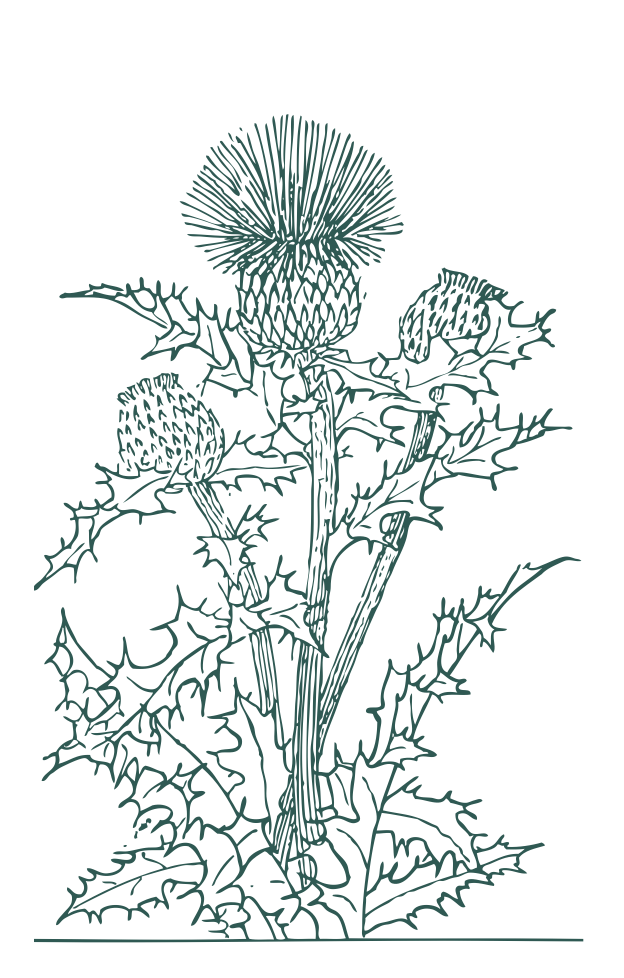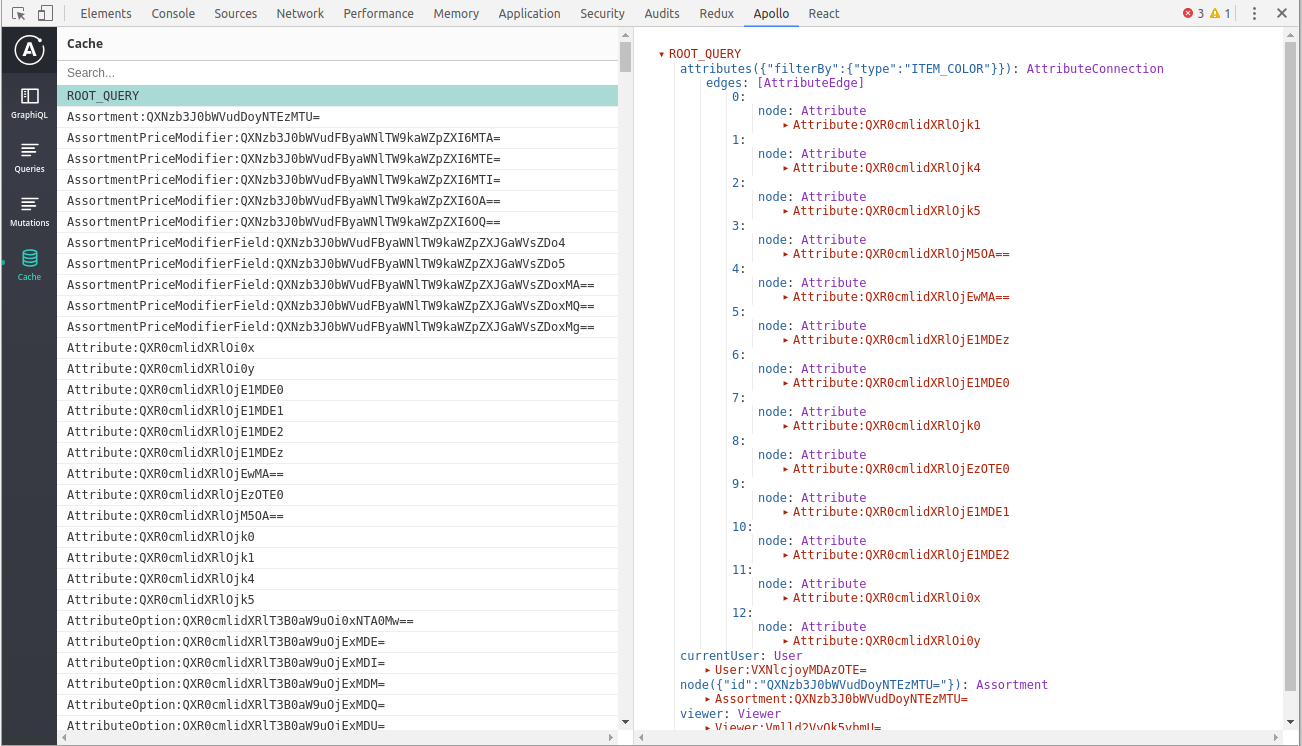Building Evolutionary API In Python
With
Dave Anderson
@dvndrsn


before the adventure
A little bit about me




before the adventure
A little bit about You








before the adventure
A little bit about You


Meet your neighbor!
- What they're looking to get out of this tutorial
- What they're unfamiliar with, be it Django, testing, git or some other technology
- If there's a way we can help each other to meet our goals.
Introduction
In this tutorial!
What is GraphQL?
-
GraphQL is a query language for your API
-
Specification, implemented in many languages and frameworks.
-
Provides a system of constraints that helps us drive a constantly evolving API.

Introduction
In this tutorial!
Our focus today
-
What is GraphQL and what are its benefits?
-
How do I get started with GraphQL in Python?
-
What does it mean for an API to be Relay-compliant?
- What kinds of changes are safe to make to my API as clients begin consuming it?
- How can I ensure my GraphQL API performs well?
- How should I design mutation responses for my GraphQL API to serve client needs?
- Why GraphQL?
Introduction
Why GraphQL?
Ask for what you need, get exactly that
-
Avoid data over-fetching by clients
-
Easy for clients to express precise field-by-field data requirements, lazily evaluated on the server
-
Encourages concentration of business logic and domain model in API and backend
-
Keep clients lean, focused on presentation of data
-
Easier to pivot or add a new platform in the future

Introduction
One request for all your data needs
-
Avoid N+1 requests for resources in clients
-
Most data can be fetched on page load in one request or catered to specific components or user interactions
-
Single endpoint increases discoverability and avoids versioning more endpoints than a squid has arms

Why GraphQL?
Introduction
Describe what's possible with a type system
-
GraphQL specification requires a schema, every field defined and typed
- Introspection of GraphQL API provide documentation, powerful tooling and a contract with clients
- Clients request the data they want with static queries against a static schema, ensuring a safe contract in dangerous waters

Why GraphQL?
Introduction
Evolve your API without versions
-
GraphQL schema provides a safe guide for evolving over time
-
Confidence in making changes encourages building only what you need now
-
Embrace You-Ain't-Gonna-Need-It
-
Evolve as needs become more
clear -
Provides first class tools for deprecation and controlled changes to APIs

Why GraphQL?
Introduction
GraphQL!
Move faster with powerful developer tools
-
Static schema typing and runtime introspection enables tooling to help you move faster
-
IDE-like editors for rapid prototyping of queries for clients
-
Robust clients manage concerns like caching and asynchronous actions letting you focus on the code that matters

Introduction
GraphQL!
Bring your own data and code
-
Broad support across languages.
-
Python community growing!





Introduction
GraphQL!
Unifying API for any kind of data source
-
Leverage as glue for other data
sources and API -
Backend for frontend for
everything. One size
fits most.

Introduction
Logistics!
Workshop schedule!
- Pomodoro
- 25 minutes on
- 5 minutes off
- Lectures + Exercises
- GraphQL + Graphene basics
- Relay Compliance
- Schema Evolution
- Performance
- Mutations + Client side concerns

Introduction
Logistics!
Principles!
- Pair Programming
- Collaborate and discuss exercises with someone else!
- Coding Practices
- Keep API code simple
- Drive solutions for exercises with tests
- Model our domain in the API and core application code

Introduction
Logistics!
Branch Checkouts!
- Each chapter has at least one branch in the git repo
- We'll start with the branch: chapter-1
- Some chapters have multiple branches
- We'll indicate which branch should be checked out for each exercise!

Project setup - see README.md.
# 0. Install Python (Target 3.6+), `invoke` and git
# 1. Clone repo
$ git clone https://github.com/dvndrsn/graphql-python-tutorial.git
$ cd graphql-python-tutorial
# 2. Checkout Chapter 1
$ git checkout chapter-1
# 3. Setup dependencies (pipenv, graphene, django, etc.) and fixture data (sqlite) using `invoke`
$ pip install invoke
$ invoke setup
# 4. Check setup - lint and test code
$ invoke check
# 5. Start Django Server
$ invoke start
# 6. Open GraphiQL - in your web browser
$ xdg-open http://localhost:8000/graphql
Introduction
Logistics!
Introduction
Dependencies and References!
Version control
# checkout a chapter branch
$ git checkout chapter-1
# save work in progress
$ git add .
$ git commit -m 'my cool commit message here'
# If you get into a state where things seem too hard to correct ...
# get rid of work in progress
$ git reset --hard
# git rid of work in progress and reset chapter the original state
$ git reset --hard origin/HEAD
# stash work in progress (temporary save)
$ git stash
# apply last stash
$ git stash popIntroduction
Dependencies and References!
Python environment
# Most of our build commands use `pipenv run` to execute in the context
# of the active virtual environment.
# install dependencies
$ pipenv install
# "activate" virtual environment in terminal shell
$ pipenv shell
# "deactive" virtual environment in terminal shell
(graphql-python-tutorial) $ exit
# Run a predefined scripts in virtual environment
$ pipenv run setup
# OR
$ pipenv run <script> # See Pipfile [scripts] for more.Introduction
Dependencies and References!
Task Runner & Build scripts
# list of build commands
$ invoke -l
# check style, types and tests
$ invoke check
# just run the tests
$ invoke test
# OR
$ pipenv run test
# run the django web server
$ make start
# OR
$ pipenv run start
# run a django shell to play with some code
$ invoke shell
# OR
$ pipenv run django_shellIntroduction
Dependencies and References!
Linting and tests
- Testing - unittest (Pre-written for each exercise)
- Code style - pylint
- Type Annotations - MyPy
# sample function annotated for MyPy
# ...
@staticmethod
def resolve_author_name(
root: models.Story, # argument: type
info: graphene.ResolveInfo,
display: str,
) -> str: # -> return_type
return root.author.full_name(display)
# ...Introduction
Dependencies and References!
Web framework
# Example ORM commands for reading data
# Select a single author
author = Author.objects.get(pk=2)
# Quereyset - Select all Authors
all_authors = Author.objects.all()
# Queryset - Select only stories with matching criteria
stories = Story.objects.filter(author__in=author)
first_story = stories[0]
# Many-to-one - access model across foreign key
first_story.author
# One-to-many - access model across foreign key
author.stories.all()Introduction
Dependencies and References!
GraphQL + Python
-
Graphene (our focus today)
- Code-first, established library
-
Ariadne
- Schema-first, supports asyncio
-
Strawberry
- Code-first, asyncio, Dataclass-based



Chapter 1
Schema, Query and Response
Let's start with a small API, just one resource for listing stories.
- How would we get a list of titles and authors for those stories with REST and GraphQL?

Chapter 1
Schema, Query and Response
To get story titles and authors with REST...
Schema? Documented in Swagger? README?{
"data": [{
"id": "1"
"title": "Game of Thrones"
"subtitle": "A Song of Ice and Fire - Book 1",
"description": "Some really long text here...",
"authorName": "George R. R. Martin",
"passageCount": 52,
"averageRating": 4.7,
"links": [{
"href": "1/passages",
"rel": "passages",
"type" : "GET"
}]
}, {
"id": "2",
"title": "Romeo and/or Juliet",
"subtitle": "A Choosable Path Adventure",
"description": "Some really long text here...",
"authorName": "Ryan North",
"passageCount": 300,
"averageRating": 4.5,
"links": [{
"href": "2/passages",
"rel": "passages",
"type" : "GET"
}]
}]
}GET /api/v1/stories?display=FIRST_LASTChapter 1
Schema, Query and Response
Now let's query for story titles and authors with GraphQL...
type Query {
stories: [StoryType]
}
enum AuthorDisplayNameEnum {
FIRST_LAST
LAST_FIRST
}
type StoryType {
id: ID!
title: String
subtitle: String
passageCount: Int
averageRating: Float
authorName(
display: AuthorDisplayNameEnum = FIRST_LAST
): String
}query myFirstQuery {
stories {
id
title
authorName(display:LAST_FIRST)
}
}{
"data": {
"stories": [{
"id": "1"
"title": "Game of Thrones"
"authorName": "Martin, George R. R."
}, {
"id": "2"
"title": "Romeo and/or Juliet"
"authorName": "North, Ryan"
}]
}
}type Query {
stories: [StoryType]
}
enum AuthorDisplayNameEnum {
FIRST_LAST
LAST_FIRST
}
type StoryType {
id: ID!
title: String
subtitle: String
passageCount: Int
averageRating: Float
authorName(
display: AuthorDisplayNameEnum = FIRST_LAST
): String
}Schema Definition Language is a way to describe our API...
- Root Query
- Object Types
- Scalar Types
- Required Fields !
- Arguments (...)
- Array Fields [...]
- Enum
Chapter 1
Schema, Query and Response
Write queries against that schema..
- Optional query keyword
- Optional operation name
- Fields on Root Query
- Selection set {...} of fields on Objects
- Fields in our Selection set
- Arguments & values (...)
query myFirstQuery {
stories {
id
title
authorName(display:LAST_FIRST)
}
}Chapter 1
Schema, Query and Response
query myFirstQuery {
stories {
id
title
authorName(display:LAST_FIRST)
}
}When we execute the query, we get JSON results.
- Same shape as query
- Only fields from our query's selection set are evaluated
{
"data": {
"stories": [{
"id": "1"
"title": "Game of Thrones"
"authorName": "Martin, George R. R."
}, {
"id": "2"
"title": "Romeo and/or Juliet"
"authorName": "North, Ryan"
}]
}
}Schema, Query and Response
Chapter 1
If you need to change data, write a mutation!
mutation newStory {
createStory (input: {
title: "GraphQL",
author: "Dave A",
description: "Its pretty cool"
}) {
story{
id
title
description
author
}
}
}Schema, Query and Response
Chapter 1
input CreateStoryInput {
title: String
author: String
description: String
}
type CreateStoryPayload {
story: StoryType
}
type Mutation {
createStory(input: CreateStoryInput): CreateStoryPayload
}{
"data": {
"createStory": {
"story": {
"id": 1,
"title": "GraphQL",
"description": "It's pretty cool",
"author": "Dave A"
}
}
}
}Define a schema...
- Send mutation
- Pass input
- Do an operation
- Return query data
GraphiQL is a tool for exploring your API.
Exploring GraphQL
- Query Editor
- Query Results
- Variable Editor

Chapter 1
- Run Query / Operation Selection
- Prettify
- History
- Documentation
Exploring GraphQL

Chapter 1
It provides powerful features to rapidly prototype queries to your API.
GraphiQL POWER USER TIPS
Ctrl + Space: Auto-completion hint.
Can be used for fields, arguments, inputs, enum values.
Ctrl + Enter: Run query under cursor.
Bonus: can autocomplete some fields in selection set for object types.
Exploring GraphQL
Chapter 1

Exercise
- Find a pair!
- Ensure you're on branch chapter-1
- Open api/queries.graphql for some sample queries and instructions to get started!
- Run queries! Add some new fields!
- Change the argument for
`authorName`! - Explore documentation!
- Use power user shortcuts!
- Change the argument for
Exploring GraphQL
Chapter 1


Increasing diversity in GraphQL Python ecosystem with code-first and schema-first approaches.
- Graphene provides a feature-complete code-first GraphQL implementation.
- Bindings provided for Django
and many other popular web frameworks and ORM.


GraphQL + Python
Chapter 2

Graphene Django provides a View for parsing GraphQL requests.
- One endpoint, processes GET or POST
- View takes a schema defined through code
- GraphiQL support built-in!
# cyoa/urls.py
urlpatterns = [
...
path(
'graphql/',
GraphQLView.as_view(schema=schema, graphiql=True)
),
...
]GraphQL + Python
Chapter 2
Schema is defined through Graphene.
- Fields auto-camelCased by default
class StoryType(graphene.ObjectType):
id = graphene.ID()
title = graphene.String()
subtitle = graphene.String()
author_name = graphene.String(
args={
'display': graphene.Argument(
AuthorDisplayNameEnum,
default_value=AuthorDisplayNameEnum.FIRST_LAST,
)
}
)
class Query(graphene.ObjectType):
stories = graphene.List(StoryType)
...
schema = graphene.Schema(query=Query)type Query {
stories: [StoryType]
}
type StoryType {
id: ID!
title: String
subtitle: String
authorName(display:
AuthorDisplayNameEnum = FIRST_LAST
): String
}GraphQL + Python
Chapter 2
- The field author_name is provided data from resolve_author_name.
- The value object being resolved is always the first argument of the resolver.
- Here root is a model object.
- Graphene allows implicit resolvers if the field name matches the attribute of the root value object.
- The query context info is always the second argument.
- Any further parameters are GraphQL arguments from the field passed as keywords.
class StoryType(graphene.ObjectType):
subtitle = graphene.String()
author_name = graphene.String(
# ...
)
@staticmethod
def resolve_subtitle(
root: models.Story,
info: graphene.ResolveInfo
) -> str:
return root.subtitle
@staticmethod
def resolve_author_name(
root: models.Story,
info: graphene.ResolveInfo,
display: str
) -> str:
return root.author.full_name(display)
GraphQL + Python
Chapter 2
Each field in our schema has a resolver function.
Resolver functions help us answer Queries.
- Queries are first parsed and validated against the schema.
- Resolver functions cascade data from the Root Query to individual scalar fields
class StoryType(graphene.ObjectType):
# ...
@staticmethod
def resolve_author_name(
root: models.Story,
info: graphene.ResolveInfo,
display: str
) -> str:
return root.author.full_name(display)
class Query(graphene.ObjectType):
# ...
@staticmethod
def resolve_stories(
root: None,
info: graphene.ResolveInfo
) -> Iterable[models.Story]:
return Story.objects.all()query myFirstQuery {
stories {
id
title
authorName(
display:LAST_FIRST
)
}
}GraphQL + Python
Chapter 2
Let's trace data through an example...
schema = graphene.Schema(query=Query)
class Query(graphene.ObjectType):
stories = graphene.List(StoryType)
@staticmethod
def resolve_stories(
root: None,
info: graphene.ResolveInfo
) -> Iterable[models.Story]:
return Story.objects.all()class StoryType(graphene.ObjectType):
# ...
author_name = graphene.String(...)
@staticmethod
def resolve_author_name(
root: models.Story,
info: graphene.ResolveInfo,
display: str
) -> str:
return root.author.full_name(display)GraphQL + Python
Chapter 2
query
stories
story1
story2
title
id
authorName
title
id
authorName
None
Fields
Root Value
Fields
Root Value
Fields
Exercise
- Find a pair!
- Ensure you're on branch chapter-2
- Open api/query/story.py for further instructions and make changes to the schema.
- Verify your changes through the prepared tests and running sample queries in api/queries.graphql
GraphQL + Python
type StoryType {
# Add fields
description: String
publishedYear: String
}Chapter 2


Why Relay compliance?
- Facebook Standards required by the Relay GraphQL client.
- Not required for other popular clients like Apollo.
- But! the standard includes some useful patterns for GraphQL.
Chapter 3
Relay Compliance

What does it mean for an API to be
Relay Compliant?
-
A mechanism for re-fetching an object.
-
A standard way to page through connections.
-
Structure around mutations to make them predictable.
Relay Compliance
Chapter 3

A mechanism for re-fetching an object.
- Our API only has lists of objects currently.
- What is a good pattern for fetching a single object?
- By adhering to Relay standard, we get that capability through the Node Field and Interface.
Relay: Node
type Query {
stories: [StoryType]
node(id: ID!): Node
}Chapter 3
An interface in GraphQL defines a set of fields which are shared across types that implement the interface.
- Node interface only provides an ID field to a type.
- Interfaces are specified using a Meta class pattern in Graphene.
Relay: Node
interface Node {
id: ID!
}
type StoryType implements Node {
# ...
}
class StoryType(graphene.Object):
class Meta:
interfaces = (graphene.Node,)
# ...Chapter 3
Node Interface
Disambiguating objects with Interface or Union
- is_type_of
- Determine if an object can be resolved with this type
Relay: Node
class StoryType(graphene.Object):
# ...
@classmethod
def is_type_of(
cls,
root: Any,
info: graphene.ResolveInfo
) -> bool:
return isinstance(root, models.Story)
Chapter 3
Querying the node field!
- Variable
- static query with dynamic values
- Field alias
- rename node to something more meaningful
- Inline Fragment
- fetch fields not part of interface
Relay: Node
query storyInfo($storyId: ID!) {
story: node(id: $storyId) {
id
... on StoryType {
title
description
}
}
}
# Variables:
# {"storyId": "U3RvcnlUeXBlOjI="}Chapter 3
The node ID value is meant to be
- non-human readable
- globally unique.
Relay: Node
U3RvcnlUeXBlOjI=
StoryType:2
<GraphQL-Type>:<ID>
Chapter 3
Graphene base-64 encodes ID values:
The node Field returns any type that implements Node matching the provided ID.
- The GraphQL type from the decoded ID is used to defer to the correct Graphene object to load the record
Relay: Node
type Query {
# ...
node(id: ID!): Node
}class Query(graphene.Object):
# ...
node = graphene.Node.Field()Chapter 3
The graphene Node field defers to the correct type to load data.
-
Use the decoded id in get_node class method
Relay: Node
class StoryType(graphene.Object):
# ...
@classmethod
def get_node(
cls,
info: graphene.ResolveInfo,
id_: str
) -> Story:
pk = int(id_)
return Story.objects.get(pk=pk)Chapter 3
Relay: Node
Exercise
- Find a pair!
- Ensure you're on branch chapter-3
- See api/queries.graphql for some examples of queries and instructions to get started.
query dataForOneStory($storyId: ID!) {
story: node(id: $storyId) {
id
... on StoryType {
title
description
}
}
}
# Variables:
# {"storyId": "U3RvcnlUeXBlOjI="}Chapter 3

A standard way to page through connections.
- As the amount of data in our system grows, we need to consider pagination for long lists of results.
- Relay Connection provides a easy to implement pagination solution using Graphene.
Relay: Connection
type Query {
stories: [StoryType]
stories(first: Int, after: String, last: int, before: String): StoryConnection
}Chapter 3
Forward pagination using a connection field.
- Page size
- Show records after this cursor
- Can we page forward? What is our next value for $afterCursor?
- Edge and node for each record (graph-like metaphor)
Relay: Connection
query($afterCursor: String) {
stories(first:10, after: $afterCursor) {
pageInfo {
endCursor
hasNextPage
}
edges {
cursor
node {
id
title
subtitle
description
authorName(display: FIRST_LAST)
}
}
}
}
# Variables : {
# "afterCursor": "YXJyYXljb25uZWN0aW9uOjA="
# }Chapter 3
Relay Connections use a Cursor-based pagination API
- Compare with Limit/Offset based API
- Cursor API is opaque to client (base-64 encoded)
- contains all information needed to paginate the results
Relay: Connection
Chapter 3

Graphene uses Cursor based API with Limit/Offset under the hood.
- The Connection arguments `first` and `last` determine Limit
- Cursor is base 64-encoded
- Cursor determines Offset
Relay: Connection
YXJyYXljb25uZWN0aW9uOjA=
arrayconnection:0
<pagination-style>:<offset>
Chapter 3
The Connection API for cursor based pagination provides.
- Pagination parameters
- Connection & Page Info
- Edge for each record
- For paging forward..
- And backward
Relay: Connection
type Query {
stories(
first: int,
after: String,
last: int,
before: String
): StoryConnection
}
type StoryConnection {
pageInfo: PageInfo
edges: [StoryEdge]
}
type PageInfo {
endCursor: String
hasNextPage: Boolean!
startCursor: String
hasPreviousPage: Boolean!
}
type StoryEdge {
cursor: String!
node: StoryType!
}class StoryType(graphene.Object):
# ...
class StoryConnection(graphene.Connection):
class Meta:
node = StoryType
class Query(graphene.ObjectType):
stories = graphene.ConnectionField(StoryConnection)
# ...Chapter 3
Moving from List to Connection is a breaking change for our API consumers!
- Carefully consider which fields require pagination
- Using Connection instead of List requires minimal extra effort
Relay: Connection
Chapter 3

Relay: Connection
Exercise
- Find a pair!
- Ensure you're on branch chapter-3b
- See api/queries.graphql for some examples of queries and more specific instructions
query pageForwardThroughStories($afterCursor: String) {
stories(first:3 , after: $afterCursor) {
pageInfo { endCursor hasNextPage }
edges {
cursor
node {
id
title
subtitle
description
authorName(display: FIRST_LAST)
}
}
}
}
# Variables:
# {"afterCursor": null}Chapter 3

Structure around mutations to make them predictable.
- No big changes to the structure or behavior of mutations to comply with the Relay spec
- Receive arguments -> change data -> send response
- Relay requires a standard way to pass mutation Input.
- And an id to determine which requests have responses...
Relay: Mutations
type Mutation {
createStory(
input: CreateStoryInput
): CreateStoryPayload
}input CreateStoryInput {
# ...
clientMutationId: String
}
type CreateStoryPayload {
# ...
clientMutationId: String
}Chapter 3
Structure around mutations to make them predictable
Relay: Mutations
Chapter 3
mutation newStory {
createStory (input: {
title: "GraphQL",
author: "Dave A",
description: "Its pretty cool",
clientMutationId: "Mutation-1"
}) {
story{
id
title
description
author
}
}
}{
"data": {
"createStory": {
"story": {
"id": 1,
"title": "GraphQL",
"description": "It's pretty cool",
"author": "Dave A"
},
"clientMutationId": "Mutation-1"
}
}
}Graphene provides a simple implementation.
- Client Mutation ID is handled automatically
- Input class mapped as argument to mutation
Relay + Mutations
input CreateStoryInput {
title: String!
author: String!
description: String!
clientMutationId: String
}
type CreateStoryPayload {
story: StoryType
clientMutationId: String
}
type Mutation {
createStory(
input: CreateStoryInput
): CreateStoryPayload
}class CreateStory(graphene.ClientIDMutation):
class Input:
title = graphene.String()
subtitle = graphene.String()
description = graphene.String()
story = graphene.Field('api.query.story.StoryType')
@classmethod
def mutate_and_get_payload(
cls,
root: None,
info: graphene.ResolveInfo,
**input_data: dict
) -> 'CreateStory':
# use input_data to create `story`
# ...
return cls(story=story)Chapter 3
In review
- Relay Compliance is just a standard, with some good GraphQL practices.
- Easy to implement with Graphene!
- Consider carefully if you don't adhere as supporting Connection or Client Mutation
ID later will lead to breaking changes!
Relay Compliance
Chapter 3

Making changes to a public interface can be hard!
- With an API, there may be multiple consumers, from your single page frontend application to android or iOS app.
- The information that tells you if a change is safe to be made is spread thin.
- If your API is public, there are even more considerations that need to be taken to avoid breaking consumers.
- But! There are rules of thumb which can help you evolve the schema without breaking changes!
Chapter 4
Schema Evolution vs. Versioning

Evolution without breaking changes.
- Given a query, with a selection of fields, arguments and variables...
- if it returns same types to a client, before and after a change...
- it will not be a breaking change!
- Types help us make this promise more easily.
- The schema is a contract that isolates the client from implementation on the server.
Chapter 4
Schema Evolution vs. Versioning

Base 64 encoding tokens like ID and Pagination Cursor encourage client safety too.
- A change to the implementation of the server should not affect clients.
- Clients discouraged from parsing and interpreting data used by the server internally.
- However, the interface of how those tokens are used, defined by our schema, does not change.
Chapter 4
Schema Evolution vs. Versioning

Adding a new field
- In GraphQL we have confidence that new fields will not have any impact on existing queries using that type.
- New data is only exposed to a client when a field is used in a query.
- Even with REST, this kind of change is often safe to make as long as we maintain the same schema for other fields.
- However, if the new field is expensive to compute, with GraphQL, we know that performance for existing queries will not be impacted.
Chapter 4
Schema Evolution vs. Versioning

Adding a new argument
- When we add a new argument to a field, we know it will not have any impact on existing queries if it is optional or if it has a default value.
- Even clients on statically typed systems like Android or iOS are typically only impacted by changes that affect the return type of queries.
- However, this may break RPC-style generated code from specific libraries (not common).
Chapter 4
Schema Evolution vs. Versioning

Evolving Any API
- In general the same principals for evolving GraphQL API's apply to REST API or any other public interface.
- Google's API Design Guide codifies this very well.
- This guide is written with REST and gRPC in mind, but the concepts are broadly applicable even to GraphQL.
Chapter 4
Schema Evolution vs. Versioning

Tooling
- In addition to the schema, the GraphQL community has developed useful tooling and techniques.
- For clients with known queries, contract testing using type checking of static queries against static schema definition.
- Resolver-level middleware can be used to track API usage from live production queries on a per field
basis.
Chapter 4
Schema Evolution vs. Versioning

Breaking Changes
- GraphQL's built in deprecation reason can be used to communicate changes to consumers.
- This is used very effectively by GitHub to communicate changes to their API months out, without ever having to version their API.
- Introspection can warn clients using fields marked for depreciation.
Chapter 4
Schema Evolution vs. Versioning

Versioning
- In REST, this is often the default option.
- In GraphQL, not the first choice, but if evolution is too drastic or risky, API versioning can be a useful escape hatch.
- Shopify, a huge proponent of GraphQL, has recently added versioning to their APIs.
Chapter 4
Schema Evolution vs. Versioning

Let's add a new related record for Story, Author to our API.
Chapter 4
Schema Evolution vs. Versioning

In REST, we might add a separate endpoint /v1/authors:
- add links to related records as URL (N+1 on client side)
- OR embed author directly into the story request (maybe overfetching)
- Do we need to bump to a new version for stories endpoint?
Schema Evolution vs. Versioning
Chapter 4

Add Author type and authors field to the root query.
- Safe evolution - only new fields
- Leverage Connection and Node
Schema Evolution vs. Versioning
type Query {
...
authors(before: String, after: String, first: Int, last: Int): AuthorConnection
}
type AuthorType implements Node {
id: ID!
firstName: String
lastName: String
fullName(display: AuthorDisplayNameEnum = FIRST_LAST): String
twitterAccount: String
# ...
}Chapter 4
What should our focus be as we grow the project structure?
- Keep like things together in packages
- Package for Query, Mutation
- Keep module files short and focused
- Module for each type or domain
api/
query/
__init__.py
author.py
story.py
base.py
mutation/
__init__.py
author.py
story.py
base.py
__init__.py
schema.py
# domain models and logic separate from api
application/...Evolving Graphene Schema & Project Structure
Chapter 4
Multiple inheritance for base Query and Mutation in package
- Each module exports root query or Mutation object
Evolving Graphene Schema & Project Structure
# api/query/base.py
class Query(
StoryQuery,
AuthorQuery
):
pass
# api/mutation/base.py
class Mutation(
StoryMutation,
AuthorMutation
):
passChapter 4
Let's evolve the schema!
- Find a pair!
- Ensure you're on branch chapter-4
- Open api/query/author.py and follow instructions to implement changes to the schema.
- Run sample queries found in api/queries.graphql.
type Query {
...
authors(before: String, after: String, first: Int, last: Int): AuthorConnection
}
type AuthorType implements Node {
id: ID!
firstName: String
lastName: String
fullName(display: AuthorDisplayNameEnum = FIRST_LAST): String
twitterAccount: String
# ...
}Evolving Graphene Schema & Project Structure
Chapter 4
Add fields that connect the two types.
- More flexible API. Navigate from a single node to any connected type.
-
In Graphene, use Field and ConnectionField with python module string.
- graphene.Field('api.query.module.Type')
- graphene.ConnectionField(
'api.query.module.ConnectionType')
Schema Evolution vs. Versioning
type AuthorType implements Node {
# ...
stories(before: String, after: String, first: Int, last: Int): StoryConnection
}
type StoryType {
author: AuthorType
# ...
}Chapter 4
Depreciate fields that are no longer required.
- Any Graphene schema object takes `deprecation_reason` keyword argument with the reason text.
Schema Evolution vs. Versioning
type StoryType {
authorName(display: AuthorDisplayNameEnum = FIRST_LAST): String @deprecated(
reason: "Use StoryType.author.fullname"
)
# ...
}Chapter 4
Let's evolve the schema (even more)!
- Find a pair!
- Ensure you're on branch chapter-4b
- Open api/query/author.py and api/query/story.py and follow the instructions to implement changes to the schema.
- Run sample queries found in api/queries.graphql.
type AuthorType implements Node {
# ...
stories(before: String, after: String, first: Int, last: Int): StoryConnection
}
type StoryType {
author: AuthorType
authorName(display: AuthorDisplayNameEnum = FIRST_LAST): String @deprecated(
reason: "Use StoryType.author.fullname"
)
# ...
}Evolving Graphene Schema & Project Structure
Chapter 4
In review..
- GraphQL gives us tools and techniques that help us prefer one unified, evolving API over many versioned endpoints
- As long as the schema used by existing queries does not change, our API can grow
- Scheduled breaking changes through depreciations allows for more drastic change
- The same techniques can be applied to REST or any other public interface with some discipline
Evolving Graphene Schema & Project Structure
Chapter 4

Chapter 5
Scaling and Performance
Over time our API may grow into something surprising.
- Beyond supporting stories and authors, we can represent a choose-your-own style
story with passages and choices. - How do we scale our API's
performance as it grows
more complex?



Chapter 5
Scaling and Performance
Performance tuning can be more challenging with GraphQL.
- Not generally possible to do HTTP level request caching
- The "N+1" problem becomes more
serious as our API grows with more connections

Scaling and Performance
What does a simple N+1 GraphQL query look like?
query storiesWithAuthor {
stories(first: 3) {
edges {
node {
id
title
author {
firstName
}
}
}
}
}
Chapter 5
S
A
S
A
S
A
S
A
S
A
S
A
S
A
{
"data": {
"stories": {
"edges": [
{
"node": {
"id": "U3RvcnlUeXBlOjI=",
"title": "Romeo and/or Juliet",
"author": { "firstName": "Ryan" }
}
},
{
"node": {
"id": "U3RvcnlUeXBlOjM=",
"title": "User Story Mapping",
"author": { "firstName": "Jeff" }
}
},
{
"node": {
"id": "U3RvcnlUeXBlOjQ=",
"title": "Ancillary Justice",
"author": { "firstName": "Ann" }
}
},
...
]
}
}
}Scaling and Performance
This can quickly get out of hand with a more nested query...
Stories
Story 1 passages
Story 2 -author, passages, etc..
Passage 1 - Choices
Choice 1 - To Passage
Passage 2 - Choices, etc..
Etc..
Time
query allStories {
stories {
id
title
author {
name
}
passages {
id
description
choices {
id
description
toPassage {
id
description
}
}
}
}
}Story 1 author
Try a few queries yourself on the chapter-5 branch, monitor the logs for N+1 queries!
Chapter 5
Scaling and Performance
To optimize, we can try to aggressively select related data in our queries..
class StoryType(graphene.ObjectType):
...
def resolve_passages(self, info, **kwargs):
return Passage.objects.filter(story=self.id) \
.prefetch_related('to_choices__to_passage')
...
class Query(graphene.ObjectType):
...
def resolve_story(self, info, **kwargs):
return Story.objects.all() \
.select_related('author')
...query allStories {
stories {
id
title
author {
name
}
passages {
id
description
choices {
id
description
toPassage {
id
description
}
}
}
}
}Chapter 5
Scaling and Performance
Less queries, but risk of overfetching from database!
Stories + author
Story 1 passages +
choices + to passage
Story 2 passages +
choices + to passage
Etc..
Etc..
Time
query allStories {
stories {
id
title
author {
name
}
passages {
id
description
choices {
id
description
toPassage {
id
description
}
}
}
}
}query allStoriesOverview {
stories {
id
title
passages {
id
description
}
}
}Chapter 5
Scaling and Performance with DataLoaders
Using DataLoader is the Facebook-preferred approach.
- Provided in the GraphQL-Python ecosystem
- Batches requests across nodes
- Request level caching for results
Chapter 5

DataLoaders:
- Should live for the context of the request only
- Load based upon a hashable key
- Batch the keys
- Load values in bulk
- Returned in order of input keys
class PassagesFromStoryLoader(DataLoader):
def batch_load_fn(self, story_ids):
return Promise.resolve(self.get_passages(story_ids))
def get_passages(self, story_ids):
passages = Passage.objects \
.filter(story_id__in=story_ids)
lookup = defaultdict(list)
for passage in passages:
lookup[passage.story_id].append(passage)
return [lookup[story_id] for story_id in story_ids]
class StoryType(graphene.ObjectType):
...
def resolve_passages(self, info, **kwargs):
return info.context.loaders.passages_from_story \
.load(self.id)
...
Scaling and Performance with DataLoaders
Chapter 5
Revisiting our simple query performance..
- While resolving each StoryType, DataLoader `load` method called with each author id.
- Batched ids are passed to DataLoader `batch_load_fn` and authors loaded in bulk.
- Author records are only fetched once (cached), even when used in multiple stories.
Scaling and Performance with DataLoaders
Chapter 5
S
A
S
A
S
A
S
A
S
A
S
A
S
A
query storiesWithAuthor {
stories(first: 3) {
edges {
node {
id
title
author {
firstName
}
}
}
}
}
Batching and caching helps scale performance!
Stories
Passages (batched across Stories)
Choices (batched across Passages)
To Passage (cached)
Time
query allStories {
stories {
id
title
author {
name
}
passages {
id
description
choices {
id
description
toPassage {
id
description
}
}
}
}
}Author (cached, batched across Stories)
Try a few queries yourself on the chapter-5b branch, monitor for batched queries!
Scaling and Performance with DataLoaders
Chapter 5
GraphQL's full potential is more realized with a rich client, like a single page javascript app.
Building a client web application
Chapter 6

Apollo is a powerful framework that allows you to focus on writing application code.
- It handles loading...
- errors...
- response normalization..
- and caching.

Building a client web application
Chapter 6
const Stories = () => (
<Query query={STORIES_QUERY}>
{({ loading, error, data }) => {
if (loading) return <p>Loading...</p>;
if (error) return <p>Error :(</p>;
return (
<div>
{data.stories.edges.map(({ node: story }) => (
<div key={story.id}>
{`${story.title} (${story.publishedYear})`} -
{story.author.fullName}
<div/>
))}
</div>
);
}}
</Query>
);
const client = new ApolloClient({
uri: "http://localhost:8000/graphql/"
});
const App = () => (
<ApolloProvider client={client}>
<Stories />
</ApolloProvider>
);const STORIES_QUERY = gql`
query storiesWithAuthor {
stories {
edges {
node {
id
title
publishedYear
author {
id
fullName(
display: FIRST_LAST
)
}
}
}
}
}
`;Building a client web application
Chapter 6
const AddStoryButton = ({ authorId }) => (
<Mutation mutation={ADD_STORY}>
{addStory => {
return (
<div
onClick={() =>
addStory({
variables: {
title: faker.company.companyName(),
subtitle: faker.company.catchPhrase(),
description: faker.company.bs(),
publishedYear: faker.date.past()
.getFullYear(),
authorId: authorId
}
})
}
>
Add story
</div>
);
}}
</Mutation>
);const ADD_STORY = gql`
mutation addStory(
$title: String
$subtitle: String
$description: String
$publishedYear: String
$authorId: ID
) {
createStory(
input: {
title: $title
subtitle: $subtitle
description: $description
publishedYear: $publishedYear
authorId: $authorId
}
) {
story {
id
title
subtitle
description
publishedYear
}
}
}
`;Building a client web application
Chapter 6
{
"data": {
"stories": {
"edges": [
{
"node": {
"id": "U3RvcnlUeXBlOjQ=",
"title": "Ancillary Justice",
"publishedYear": "2013",
"author": {
"id": "QXV0aG9yVHlwZTo2",
"fullName": "Ann Leckie"
}
}
},
{
"node": {
"id": "U3RvcnlUeXBlOjU=",
"title": "Ancillary Sword",
"publishedYear": "2014",
"author": {
"id": "QXV0aG9yVHlwZTo2",
"fullName": "Ann Leckie"
}
}
},
# ...
]
}
}
}query storiesWithAuthor {
stories {
edges {
node {
id
title
publishedYear
author {
id
fullName(
display: FIRST_LAST
)
}
}
}
}
}Building a client web application
Chapter 6
Normalization & Caching
- AuthorType:QXV0aG9yVHlwZTo2
- StoryType:U3RvcnlUeXBlOjQ=
- StoryType:U3RvcnlUeXBlOjU=
- ROOT_QUERY
query storiesForAuthor {
author(id: "1") {
id
firstName
lastName
stories {
id
title
}
}
}query listOfAuthors {
authors {
id
firstName
lastName
}
}mutation changeStory {
updateStory(input:{
id:"1",
title: "Update this!"
}) {
story {
id
title
}
}
}...we ensure that the cache will be updated properly and updated data flows to components.
As we add more queries and mutations, If all objects have a ID...
Chapter 6
Building a client web application
Apollo Development Tools
- Show denormalized cache
- Show active queries & Mutations
Chapter 6

Building a client web application
API Design for Client Side Caching
As your single page app grows, you may see more caching bugs..
- There are some rules of thumb for designing mutations to avoid them!
- And Apollo provides some nice escape hatches for when those won't work.

Chapter 6
When removing items from lists...
API Design for Client Side Caching
query storiesForAuthors {
author(id: "1") {
id
firstName
lastName
stories {
id
title
}
}
}mutation removeStory {
removeStory(input:{
authorId:"1",
storyId: "6"
}) {
story { # RETURNS REMOVED STORY DATA
id
title
}
}
}...you may not see them properly removed on the page.
Chapter 6
<Mutation
mutation={REMOVE_STORY}
update={(cache, { data: { removeStory } }) => {
const { stories } = cache.readQuery({ query: GET_STORIES });
cache.writeQuery({
query: GET_STORIES,
data: {
stories: stories.filter(
(stories) => story.id == removeStory.story.id
) },
});
}}
>
...API Design for Client Side Caching
Apollo provides a mechanism for manually updating the cache...
...but this can be hard to reason about and test.
Chapter 6
<Mutation
mutation={REMOVE_STORY}
refetchQueries={['allStories']}
>
...API Design for Client Side Caching
We could also more simply just refetch any affected queries...
...but as your page grows, it can be hard to maintain a full list of queries and can be expensive to refetch!
Chapter 6
query storiesForAuthors {
author(id: "1") {
id
firstName
lastName
stories {
id
title
}
}
}mutation removeStory {
removeStory(input:{
authorId:"1",
storyId:"6"
}) {
story {
id
title
}
author {
id
stories {
id
}
}
}
}API Design for Client Side Caching
...the cached list of stories for our author will be updated automatically!
If we design our mutation payload correctly..
Chapter 6
query storiesForAuthors {
author(id: "1") {
id
firstName
lastName
stories {
id
title
description
}
}
}mutation addStory {
addStory(input:{
authorId:"1",
title: "Stuff"
}) {
story {
id
title
}
author {
id
stories {
id
}
}
}
}API Design for Client Side Caching
When adding to a list with a mutation...
We'll face errors in Apollo due to missing fields in our new post.
Chapter 6
query storiesForAuthors {
author(id: "1") {
id
firstName
lastName
story {
...allStoryFields
}
}
}
fragment allStoryFields on Story {
id
title
description
}mutation removePost {
addStory(input:{
authorId:"1",
title: "Stuff"
}) {
story {
...allStoryFields
}
author {
id
stories {
id
}
}
}
}API Design for Client Side Caching
Fragments can help us ensure that all fields are fetched when adding an item to a list.
Chapter 6
API Design for Client Side Caching
Chapter 6
Let's fix some caching bugs!
- Find a pair!
- Ensure you're on branch chapter-6 for backend and frontend.
- Ensure your backend and frontend servers are running.
- Open src/AddStoryButton.js on frontend and follow instructions to try to address the caching problems by modifying the query.

EPILOGUE TO Your Adventure
A parting word before the next adventure
Evolution in a nutshell...
- Constraints to build a Minimal, Evolving API
- Static typed schema and queries as a guide
- Focus on Domain Modeling
- Rich backend, lean frontend - fields and arguments describing specific data requirements
- Powerful client, letting you focus on writing the code that matters

The end
Thanks for participating!
Questions?
@dvndrsn
The Rabbit Hole Podcast: http://bit.ly/2Jous2O
Stride Consulting: https://www.stridenyc.com/careers

Dave Anderson
References
Thanks for listening!
Icons8 (open source icons):
Open Clip Art:
VectEasy:
Code Sample:
https://github.com/dvndrsn/graphql-python-tutorial
Graphene (Python):
http://docs.graphene-python.org/en/latest/
Apollo (JavaScript):
Building Evolutionary API with GraphQL and Python
By dvndrsn
Building Evolutionary API with GraphQL and Python
This tutorial will focus on building a GraphQL API using the Python library Graphene with a Django backend as a vehicle for teaching the principals of evolutionary API that can be applied across any tech stack, including REST, as well as the more practical concerns of working with Graphene and designing your API for GraphQL.
- 4,467



